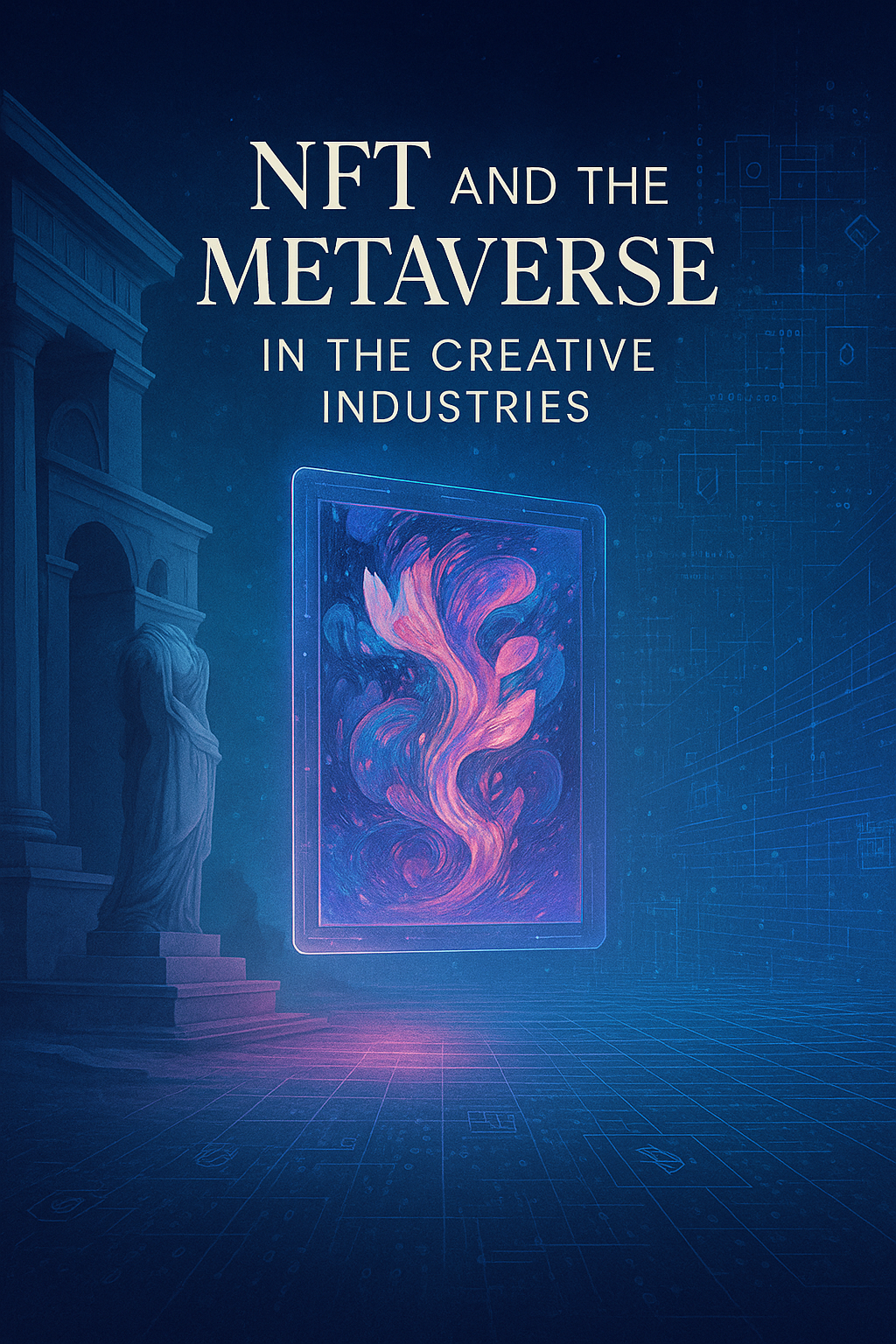A book that dismantles the clichés of Web3 and reassembles its cultural significance.
NFT and the Metaverse in the Creative Industries explores the profound transformations of authorship, governance, and aesthetics in the age of blockchain. A lucid, curatorial analysis that restores depth to concepts like immersivity, decentralization, and interoperability—revealing what is truly at stake for the future of the cultural industries.
BOOK ON MY TABLE
Charlotte Madeleine CASTELLI
8/1/20253 min read


NFT and the Metaverse in the Creative Industries. Systemic Refractions between Aesthetics, Governance, and Emerging Technologies.
Discussing NFTs and the metaverse within the creative industries today is far more than a response to ephemeral jargon or speculative market shifts: It is, rather, an inquiry into an epistemic reconfiguration—one that touches the very way we conceive authorship, experience, and the economy of imagination.
It is within this framework that NFT e Metaverso nelle Industrie Creative (Castelvecchi, 2024) takes its place, not as a promotional pamphlet nor a catalog of digital experiments, but as a critical and analytical tool that weaves together the multiple trajectories now crossing contemporary cultural practices. Curated by Giulio Centemero, with contributions from Giada Tognon and a foreword by Angelo Miglietta, the volume stands out for its structural clarity and its theoretical depth—qualities still rare in the Italian publishing landscape on such themes.
Through a selection of concrete case studies—from Takyon to Reasoned Art—the text offers a precise and layered dissection of today’s digital creative ecosystem. Yet its analysis goes far beyond the operational surface of platforms or marketplaces: what is ultimately placed under scrutiny is the role of cultural institutions, curators, and artists in a world where certification becomes algorithm, ownership is tokenized, and the artwork exists simultaneously across physical spaces and generative environments.
One of the book’s most significant strengths lies in its ability to dismantle the commonplace assumptions saturating contemporary discourse around terms such as immersivity, decentralization, and interoperability. Concepts often flattened by tech rhetoric and reduced to surface-level language are here reinserted into a critical genealogy, restoring their theoretical density and strategic relevance for the future of cultural production.
Take immersivity, for instance: not treated here as a mere technical quality—a function of headsets or visual expansion—but as a performative space that reconfigures the role of the viewer, the notion of authorship, and the architecture of artistic experience itself. The metaverse is not framed as a tridimensional container or a self-referential illusion, but as a semiotic and relational environment, structured according to logics that recall both baroque spectacle and the engagement protocols of digital platforms. In other words, it becomes a cultural and political form—an ideological artifact capable of shaping new symbolic ecologies, where the spectator is no longer passive but an active node within a shared narrative field.
In its deconstruction of decentralization, the book moves beyond the binary between institutional authority and distributed autonomy. What emerges is not simply a redistribution of power, but the formulation of new models of cultural governance—where ownership, validation, and access to artworks become transparent, traceable, and above all, collective negotiations. It is precisely here that NFTs assume a critical function: no longer mere monetization tools or digital collectibles, but conceptual infrastructures, genuine governance interfaces that articulate the relationship between artist, artwork, and audience.
The notion of interoperability is also reinterpreted through a cultural—not merely technical—lens. The discourse shifts from system compatibility to the translatability between artistic languages, aesthetic codes, and cultural contexts. In this sense, interoperability becomes a curatorial criterion: the ability of a work, a project, or a digital identity to migrate across diverse spaces, publics, and temporalities while maintaining—or amplifying—its expressive and symbolic agency.
The book distinguishes itself by the precision with which it dismantles the narrative automatisms of Web3, and by its lucid reframing of digital technologies as cultural constructs rather than neutral tools. Far from endorsing a utopian or technocentric vision, it proposes a layered reflection in which the digital is positioned as a space of cultural design and collective responsibility. Within this landscape, the artist becomes a protocol architect, the curator a mediator of algorithmic discourse, and the public an active community engaged in the generation of meaning.
As it unfolds, the volume takes the shape of a forward-looking cartography—where technology is never an end in itself, but a lens through which to reinterrogate established categories: What is an artwork today? Who owns it, who validates it, and through which protocols? And, crucially, what roles will museums, festivals, and archives play within a culture that is increasingly hybrid, mobile, and fluid?
The prose—precise, never self-indulgent—reveals a latent curatorial intention: to offer a text that is readable without being simplistic, accessible yet rigorously composed, one that speaks equally to institutional practitioners, start-up innovators, and artistic researchers. The result is a book that does not just inform but ignites necessary debate on the future of cultural production—between aesthetics and blockchain, between code and curatorship, between identity and metaverse.
Ultimately, NFT and the Metaverse in the Creative Industries is a book that deserves not only to be read, but to be discussed. Not merely for what it declares, but for what it enables us to imagine: a creative industry that is conscious, critical, and layered. A future in which innovation is no longer synonymous with automatism, but with cultural responsibility.
© Charlotte Madeleine Castelli | All rights reserved
